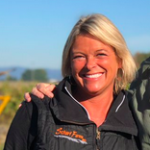 The Administration of President Donald Trump has officially begun and everyone in D.C. is buzzing. The early days suggest it will indeed be a new paradigm – one that is unconventional in style, substance and process. The cabinet is beginning to take shape as the Senate works through the process of confirming nominees – –but no cabinet is complete without the Secretary of Agriculture, currently still vacant. Look for the Senate Agriculture Committee to hold confirmation hearings in the coming weeks for nominee Sonny Perdue. This former Governor of Georgia is making the rounds with Senators to share his vision for the U.S. Department of Agriculture and answer questions. The Senate aims to have him confirmed by the end of February or early March.
The Administration of President Donald Trump has officially begun and everyone in D.C. is buzzing. The early days suggest it will indeed be a new paradigm – one that is unconventional in style, substance and process. The cabinet is beginning to take shape as the Senate works through the process of confirming nominees – –but no cabinet is complete without the Secretary of Agriculture, currently still vacant. Look for the Senate Agriculture Committee to hold confirmation hearings in the coming weeks for nominee Sonny Perdue. This former Governor of Georgia is making the rounds with Senators to share his vision for the U.S. Department of Agriculture and answer questions. The Senate aims to have him confirmed by the end of February or early March.
USCA Blog
Here are timely updates about issues impacting the canola sector. Subscribe to Canola Quick Bytes for notifications of new blog posts.
Pacific Northwest Canola Growers Association: The Time is Right
 Not long after joining the Washington Oilseed Cropping Systems (WOCS) project at Washington State University 10 years ago, I had the good fortune of meeting a farmer in eastern Washington who had been growing canola for more than 20 years. This farmer told me about an effort in the mid-90s – when production was finally gaining some steam – to create a Pacific Northwest (PNW) canola and rapeseed association. However, that effort ‘faded away’after several years. The idea resurfaced five years ago, but again, did not go anywhere. All the while, acreage in the PNW continued an upward trend.
Not long after joining the Washington Oilseed Cropping Systems (WOCS) project at Washington State University 10 years ago, I had the good fortune of meeting a farmer in eastern Washington who had been growing canola for more than 20 years. This farmer told me about an effort in the mid-90s – when production was finally gaining some steam – to create a Pacific Northwest (PNW) canola and rapeseed association. However, that effort ‘faded away’after several years. The idea resurfaced five years ago, but again, did not go anywhere. All the while, acreage in the PNW continued an upward trend.
Making a Case for Canola in the Southern Great Plains
 During the early 1990s, farmers in Oklahoma, Kansas and four other southern Great Plains states planted more than 32 million acres of wheat annually. Much of it was produced practicing little or no rotation, and with mounting problems due to deliberate monocropping.
During the early 1990s, farmers in Oklahoma, Kansas and four other southern Great Plains states planted more than 32 million acres of wheat annually. Much of it was produced practicing little or no rotation, and with mounting problems due to deliberate monocropping.
A group of university researchers representing these states recognized the dire need for crop diversification and the development of alternative crops. They identified the soft-seeded (minor) oilseeds as promising for the region and zeroed in on canola, which promised the benefit of breaking disease and other pest cycles in wheat. The group formed the Great Plains Canola Council (GPCC) in 1990.
Kansas Producers Expect to Capitalize on Canola
 Don’t look now, but more yellow flowers may be popping up across Kansas, and they are not of the sunflower variety, which is the official state flower.
Don’t look now, but more yellow flowers may be popping up across Kansas, and they are not of the sunflower variety, which is the official state flower.
Based on the number of phone calls and emails I received this summer, I fully expect winter canola acres to rebound substantially for the 2017 crop year. Many producers said the price of wheat led them to their decision to plant canola, but I quickly reminded them that there are many benefits to rotating to canola including greater wheat yields, better weed control options and growing consumer demand for the oil.
Policies Emerging on Low-Level Presence of Biotech Crops
 As a grain trader would profess, efficient and effective trade is based on the principal of fungibility, allowing for the substitution of grain from source to source as market conditions dictate. Since the introduction of biotech crops, growers and traders have both benefitted from increases in yield and overall productivity, however, the patchwork map of regulatory systems for biotech crops has created significant hurdles in maintaining this fungibility.
As a grain trader would profess, efficient and effective trade is based on the principal of fungibility, allowing for the substitution of grain from source to source as market conditions dictate. Since the introduction of biotech crops, growers and traders have both benefitted from increases in yield and overall productivity, however, the patchwork map of regulatory systems for biotech crops has created significant hurdles in maintaining this fungibility.
Interest in Canola Increases in Willamette Valley
 The 2016 canola harvest has all but wrapped up in Oregon’s Willamette Valley and it was another good year – fields averaged 3,000 pounds per acre and one grower exceeded 5,000 pounds per acre. But more importantly, it was another year of successful rotational crops for Willamette Valley farmers.
The 2016 canola harvest has all but wrapped up in Oregon’s Willamette Valley and it was another good year – fields averaged 3,000 pounds per acre and one grower exceeded 5,000 pounds per acre. But more importantly, it was another year of successful rotational crops for Willamette Valley farmers.
More Washington State Growers Choose Canola, Seek Advice on Blackleg
 Interest in canola as a rotation crop in the cereal-dominated cropping systems of the Pacific Northwest continues to increase, particularly with depressed wheat prices, and with steady demand from the Pacific Coast Canola processing facility in Warden, Wash. The Crucifer Quarantine enacted last fall, however, has prompted many questions and requests for advice about blackleg from growers and industry. In response to concerns, faculty at the Washington State University-based Washington Oilseed Cropping Systems Project developed a handout to distribute at field tours. The guide includes concise information about the current status of blackleg in Washington, the Crucifer Quarantine requirements, scouting for blackleg, and photos of blackleg symptoms from fields in Idaho and Oregon.
Interest in canola as a rotation crop in the cereal-dominated cropping systems of the Pacific Northwest continues to increase, particularly with depressed wheat prices, and with steady demand from the Pacific Coast Canola processing facility in Warden, Wash. The Crucifer Quarantine enacted last fall, however, has prompted many questions and requests for advice about blackleg from growers and industry. In response to concerns, faculty at the Washington State University-based Washington Oilseed Cropping Systems Project developed a handout to distribute at field tours. The guide includes concise information about the current status of blackleg in Washington, the Crucifer Quarantine requirements, scouting for blackleg, and photos of blackleg symptoms from fields in Idaho and Oregon.
No Summer Break for Biodiesel Policy: Industry Argues Time is Now to Expand
 While many policy matters are on idle as we enter the heat of summer and this election year, biodiesel policy issues are not slowing down.
While many policy matters are on idle as we enter the heat of summer and this election year, biodiesel policy issues are not slowing down.
On May 27, the U.S. Environmental Protection Agency (EPA) released the proposed rule for the Renewable Fuel Standard (RFS) volume requirements, including the volume requirements for biomass-based diesel for 2018 and the total advanced biofuels volumes for 2017 and 2018.
Science Meets Art: In Praise of Modern Plant Breeding
 Over the last several thousand years, humans have taken a more active role in the evolution of plants by specifically saving and selecting seed from plants that looked, smelled or tasted particularly interesting. The result was the domestication of plants, making it easier to grow and harvest them and become better, more reliable and nutritious sources of food. This same process continues today, though in a more formalized way, using the science and art of plant breeding.
Over the last several thousand years, humans have taken a more active role in the evolution of plants by specifically saving and selecting seed from plants that looked, smelled or tasted particularly interesting. The result was the domestication of plants, making it easier to grow and harvest them and become better, more reliable and nutritious sources of food. This same process continues today, though in a more formalized way, using the science and art of plant breeding.
NCGA’s 2016 Canola Research Focuses on Disease

Canola research is more important than ever to the crop’s future. With this in mind, the Northern Canola Growers Association (NCGA) has awarded $220,000 so far in 2016 to help fund nine studies. Projects this year address disease identification and control in canola, primarily blackleg and sclerotinia. Additional research seeks to decrease production costs, increase quality of canola and identify end-use applications.